Research Symposium
22nd annual Undergraduate Research Symposium
Maya Tiseth Poster Session 3: 11:00-11:45/Poster #25

BIO
I am a 4th year undergraduate student studying Biology, with a specialization in marine biology and population ecology. I am interested in marine megafauna population interactions and migration pattern response to climate change.
Heterandria formosa metabolic response to simulated food variability
Authors: Maya Tiseth, Matthew SchummStudent Major: Biology
Mentor: Matthew Schumm
Mentor's Department: Biological Sciences Mentor's College: College of Arts and Sciences Co-Presenters:
Abstract
Environmental changes due to increased temperatures can cause an overall decrease in species diversity and changes food web interactions. This can lead to a change in food availability for many species. Least killifish are sensitive to changes in food availability. We ask if food variability causes changes in their oxygen consumption. The hypothesis is that a decrease in food availability will cause fish to lower their oxygen consumption. With respirometry chambers and Presens sensors, analysis of individual respiration was analyzed against food availability. A controlled environment with constant food is analyzed against a variable food environment using a generalized linear model. Climate change causes a decrease in biodiversity and species richness which impacts food web interactions in all ecosystems. This indirectly correlates to the decreased metabolic rate of fish in environments where food availability is low. Future studies will focus on temperature change directly and how an increased temperature will cause a decrease in metabolism and energy usage.
Keywords: climate change, respirometry, metabolic rate
22nd annual Undergraduate Research Symposium
Sarah Ghali Poster Session 5: 1:30 - 2:15/Poster #54
BIO
My name is Sarah Ghali, I am a first generation Egyptian-American. I am from Fort Lauderdale, Florida. I went to Cardinal Gibbons High School where I graduated with a 4.8 GPA. I am also an athlete, I started playing water polo in the sixth grade, and I am now on the club team here at FSU. I am currently a behavioral neuroscience major on a pre-medical track with the hopes of going to medical school and becoming an orthopedic surgeon in the near future.
Facilitating Teacher Learning with Video Clips of Instruction in Science
Authors: Sarah Ghali, Miray Tekkumru-Kisa and Ozlem Akcil OkanStudent Major: Behavioral Neuroscience
Mentor: Miray Tekkumru-Kisa and Ozlem Akcil Okan
Mentor's Department: Teacher Education Mentor's College: College of Education Co-Presenters: Elena Malchevskaya, Jennifer Lafortune, and Samuel Domsch
Abstract
The Next Generation Science Standards (NGSS) is a set of education standards used across disciplines and grades in the United States to provide students with an internationally benchmarked science education rich in content and practice. The primary purpose of NGSS is to create a common standard for teaching in the U.S. and help in fostering a greater interest in science among students. Classroom-based performance assessments are embedded into classroom instructions to provide teachers with insight into how their students understand the material taught in class and monitor the development of their thinking skills. Three-dimension (3-D) assessments allow teachers to evaluate and monitor students’ progress during the course and use the evidence to offer targeted support catered to the student’s needs. While numerous states and school districts seek to find class-based performance assessments that support their goals for effective science instruction and NGSS guidelines, few quality assessments exist. This research introduces an accessible and receptive co-design process that focuses on five critical points that advantage their expertise. Seven 8th grade science teachers from an urban district participated in ten co-design meetings over six months. In this study, the teachers’ experiences regarding the co-design meetings and the way they perceived the co-design meetings were examined through the usage of interview protocol questions used to elicit teachers to think about their experiences during the meetings.
Keywords: Teacher education, co-design process, collective
22nd annual Undergraduate Research Symposium
Katherine Velardo Poster Session 2: 10:00 - 10:45/Poster #34
BIO
I'm a sophomore from New York studying to be an art therapist, double majoring in Psychology and Studio Art. Interdisciplinary research involving psychology, sociology, and philosophy is of special interest to me. I'm involved in philosophy research through UROP, and neuroscience research outside of the program on campus.
Analyzing Consent Cross-Culturally: Building a Framework to Accommodate Social Understanding
Authors: Katherine Velardo, Marshall BiersonStudent Major: Psychology and Studio Art
Mentor: Marshall Bierson
Mentor's Department: Philosophy Mentor's College: College of Arts and Sciences Co-Presenters: Emma Quaid
Abstract
Consent has been a topic of recent philosophical debate, and understanding how consent is given and what that agreement looks like is important to philosophical debates and everyday life applications. The concept of consent is embedded in the agreements we make, like consent to medical procedures, consent to loan agreements, or consent to sexual acts. Outlined markers of valid consent are crucial to having fair and morally permissible agreements. Consent relies on cultural understanding as well as implied and explicit communication. Factors such as cultural expectations, gender roles, social scripts, and expectations can make consent harder to categorize. Our research investigates how consent presents itself across different cultures considering the three prominent fields of sexual, medical, and contractual consent. We want to form a base framework or understanding of consent so individuals can navigate what consensual agreement looks like cross-culturally. By collecting journal articles through FSU databases, we performed literature reviews to build concept maps and knowledge of the current consent terrain. The preliminary visual was based on the most compelling consent framework with cross-cultural additions. We found that consent relies on the interaction between the content of one’s agreement and the implied exchange that comes with that agreement, primarily through situational and cultural knowledge and expectations. Consent is non-transferable and applies to a specific action, but it is often applied as a continual process, and it relies on commonly understood actions and behavior that signal consent to later specific actions or patterns of social interaction.
Keywords: Consent, Philosophy, Cross-Cultural
22nd annual Undergraduate Research Symposium
John Stainbrook Poster Session 7: 3:30 - 4:15/Poster #58

BIO
My name is John Stainbrook and I am from Sarasota Florida. I love exercising and spending time outdoors. I am most interested in research with relation to public health, as I love working to be a part of a positive change, and to contribute to something larger than myself such as the wellbeing of others. In the future, I hope to do more work with Lake Munson in particular to potentially find a solution or help alleviate the contamination of the lake and other lakes like it.
Lake Munson Mortality Project
Authors: John Stainbrook, Terry RyanStudent Major: Biological Science
Mentor: Terry Ryan
Mentor's Department: Biological Science/ Health Mentor's College: Arts and Sciences Co-Presenters: Ali Bell
Abstract
Lake Munson has been a polluted body of water for more than 100 years, the people living in the area have noted complications and disease arising from their proximity to the lake since this time. Using data tabulated from Florida Health and Charts, along with supporting socioeconomic databases, research was conducted to ascertain the validity of these claims. Census Tracts 27.01, 18.01, 11.01, 10.01, 10.02, 22.01, 14.02, and 20.03 had the lowest life expectancy figures in Leon County from 2015-2019 ranging from 67.10 to 72.90 years and averaging 70.26 years (Leon County Average:79.6 years). Utilizing a T test for significance, the 8 life expectancies were lower than the Leon County Average to a degree of high statistical significance, (p=0, n>50). Five of these eight directly encompass Lake Munson and the Munson Slough: 27.01, 18.01, 11.01, 10.01, and 10.02. Census tracts 22.01, 14.02, and 20.03 do not directly surround Munson and the Munson Slough, however census tracts 20.03 and 14.02 have extremely high poverty rates of 64.20% and 64.80% respectively. The poverty rate for the remaining 6 census tracts are not as high, ranging from 19.30% to 41.70% and averaging 32.50% (Leon County Average poverty rate: 22%). These results seem to support our initial hypothesis that the pollution of Lake Munson is affecting the life expectancy of those living in the aforementioned-census tracts
Keywords: Lake Munson Pollution Public Health Life Expectancy
22nd annual Undergraduate Research Symposium
Hannah Shortino Poster Session 1: 9:00-9:45/Poster #54

BIO
Hello, my name is Hannah Shortino and I am a second year honors student majoring in political science. I am originally from New Jersey but recently moved to Orlando, Florida. On my free time I like to travel, go to the beach and read a good book. In addition to UROP, I am a legislative fellow for Rep. Carlos G. Smith (FL-49), a member of Kappa Kappa Gamma and Garnet and Gold Scholars Society. After graduation, I plan on attending law school and pursuing a career in political strategizing and campaigning.
Granum & Aurum
Authors: Hannah Shortino , Dr. Jillian Volpe-WhiteStudent Major: Political Science
Mentor: Dr. Jillian Volpe-White
Mentor's Department: Department of Student Affairs Office of Strategic Planning & Assessment Mentor's College: Florida State University Co-Presenters:
Abstract
Granum & Aurum is a market research team created by the FSU Division of Student Affairs Strategic Planning & Assessment team. Granum is the root word for garnet in Latin, meaning "seed" or "grain." Aurum is the Latin word for gold. The name represents Florida State's colors, as well as the hope that this group will help administrators find seeds of gold to enhance the FSU student experience.
Granum & Aurum is made up of a pool of current Florida State students who have opportunities throughout the year to participate in focus groups. Each focus group is formed in response to the needs of the particular department to complement their already existing data or to answer research questions that cannot be answered through other assessment methods, including surveys or program evaluations.
Keywords: qualitative, focus groups, granum and aurum
22nd annual Undergraduate Research Symposium
Damian del Carpio Poster Session 5: 1:30-2:15/Poster #65
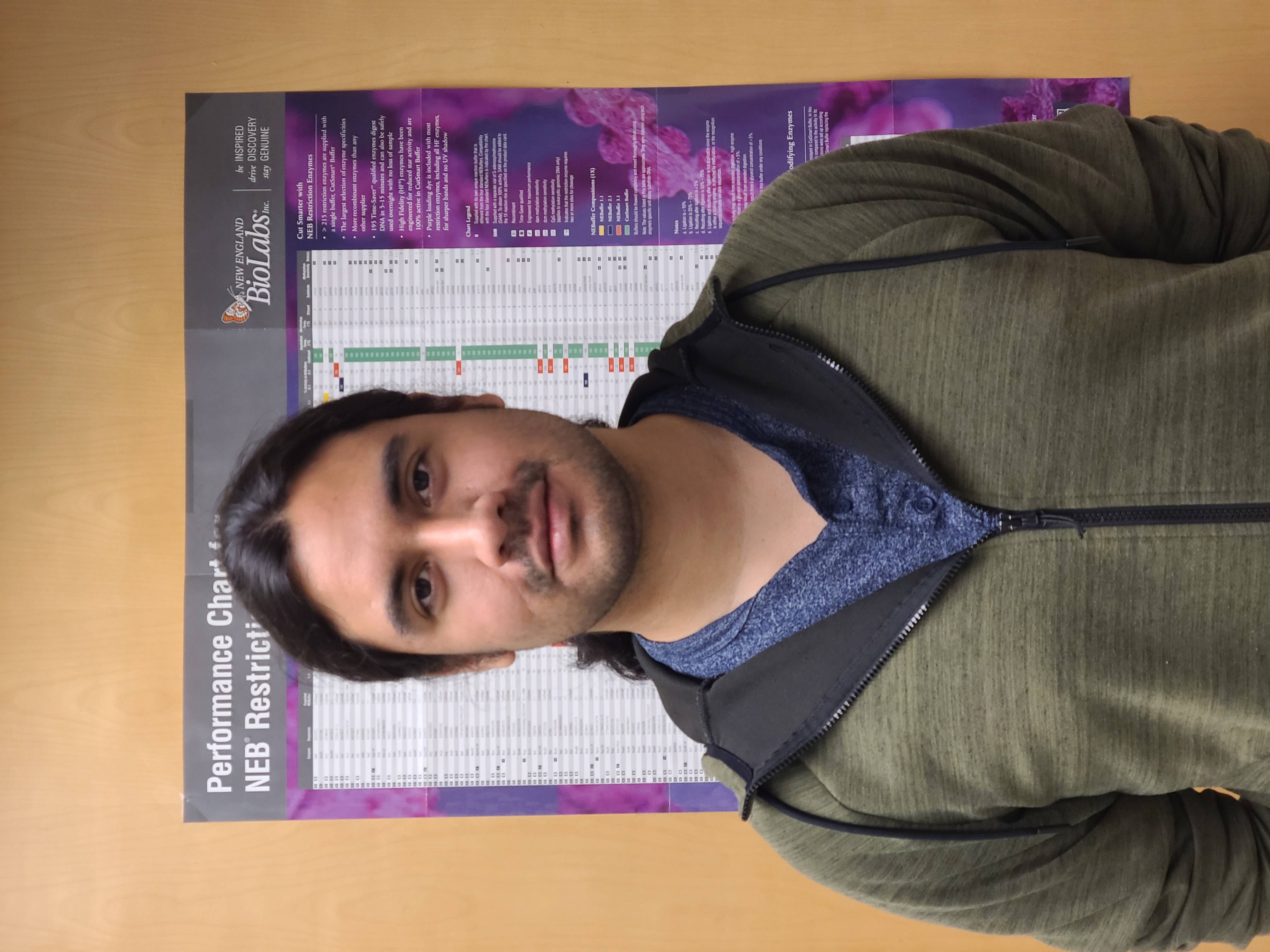
BIO
Damian del Carpio is an American-Peruvian junior undergraduate transfer student at FSU majoring in Biological Sciences. He aims to pursue a PhD degree post-graduation, and his research interests revolve around furthering our understanding of the code of life for medical and enhancement purposes. del Carpio's career aspirations look at the work put forth by health focused federal institutions such as the CDC with great admiration as well as the possibility of developing new genetic therapies under his own brand for ethical commercial distribution.
LaRP1 and LaRP1b binding mechanism to Poly-A Binding Protein by Single Crystal XRD
Authors: Damian del Carpio, Blaine GordonStudent Major: Biological Sciences
Mentor: Blaine Gordon
Mentor's Department: Chemistry and Biochemistry Mentor's College: Arts and Sciences Co-Presenters:
Abstract
La-related proteins, LaRP1 and LaRP1b, regulate protein biosynthesis and translation factors by interacting with TOP (5′-terminal oligopyrimidine tract) mRNAs. Understanding how LaRPs interact with mRNA may open new ways to treat some diseases, as they play a critical role in gene expression. Addition of a tail of adenosine monophosphates (Poly-A) is part of mRNA maturation and protects it from degradation. This is assisted by the multi domain Poly-A Binding Protein (PABP) which also helps regulate the translation of the mRNA by mediating interactions between it and other proteins. The project explores the binding mechanism of LaRP1 and LaRP1b through a conserved PAM2 (PABP-interacting motif 2) motif to PABP’s MLLE domain by Single Crystal X-Ray Diffraction. The expectation is that LaRPs 1 and 1b bind the MLLE domain similarly to other known PAM2 motif carrying proteins. Single crystals containing peptides of the PAM2 sequences of both LaRP proteins, and the MLLE domain, were grown by hanging-drop vapor diffusion, and diffracted at Brookhaven National Laboratory. The data gathered was used to index the crystals’ unit cell orientation and dimensions using the software HKL2000. Further refinement of the data for the molecular structural determination was done by molecular replacement using the software Phenix. The final data will reveal the physical binding conformation of the MLLE with the peptide and a 3-D model of the complex’ structure will be rendered with the software PyMOL.
Keywords: structural biology, crystallography, protein-protein interactions, mRNA binding proteins, biophysics, biochemistry
22nd annual Undergraduate Research Symposium
Taiwo Sogbesan Poster Session 6: 2:30 - 3:15/Poster #62
BIO
My name is Taiwo Sogbesan and I am currently majoring in biomedical engineering. I look forward to researching topics such as bio-instrumentation and biomechanics. My passion for the biomedical engineering field arose during my junior year in high school when I tore my patella tendon playing football. During my rehabilitation process, I was introduced to various medical devices and exercises to assist in my recovery. The ability of these devices to aid and assist people drove me to potentially research and develop future medical devices the world needs. All in all, I want my research to help the world and leave a positive impact on people's life.
Finding Orange: Natural Frequency of Rocking Chairs
Authors: Taiwo Sogbesan, Dr. Stephen Hugo ArceStudent Major: Biomedical Engineering
Mentor: Dr. Stephen Hugo Arce
Mentor's Department: Biomedical Engineering and Chemical Engineering Mentor's College: FAMU-FSU College of Engineering Co-Presenters: Vivian Bernard
Abstract
Our project focuses on modeling the motion of a rocking chair. We recorded videos of the free oscillation of the chair under different conditions. The data obtained from our trials were then processed using MatLab. From the figures generated, we were able to begin to identify the constants within the preestablished ODE, which modeled the motion of the chair. Our goal with this research is to gain a thorough understanding of the chair in order to be then able to create a device that prolongs the oscillation of the chair. Our main motivation for this project is to provide a restful night of sleep to a child who has autism. He is unable to sleep if he is not being rocked, and therefore we hope our research is able to develop a device to aid him.
Keywords: Finding, orange, natural frequency, and rocking chair
22nd annual Undergraduate Research Symposium
Madison O'Stewart Poster Session 4: 12:30-1:15/Poster #3
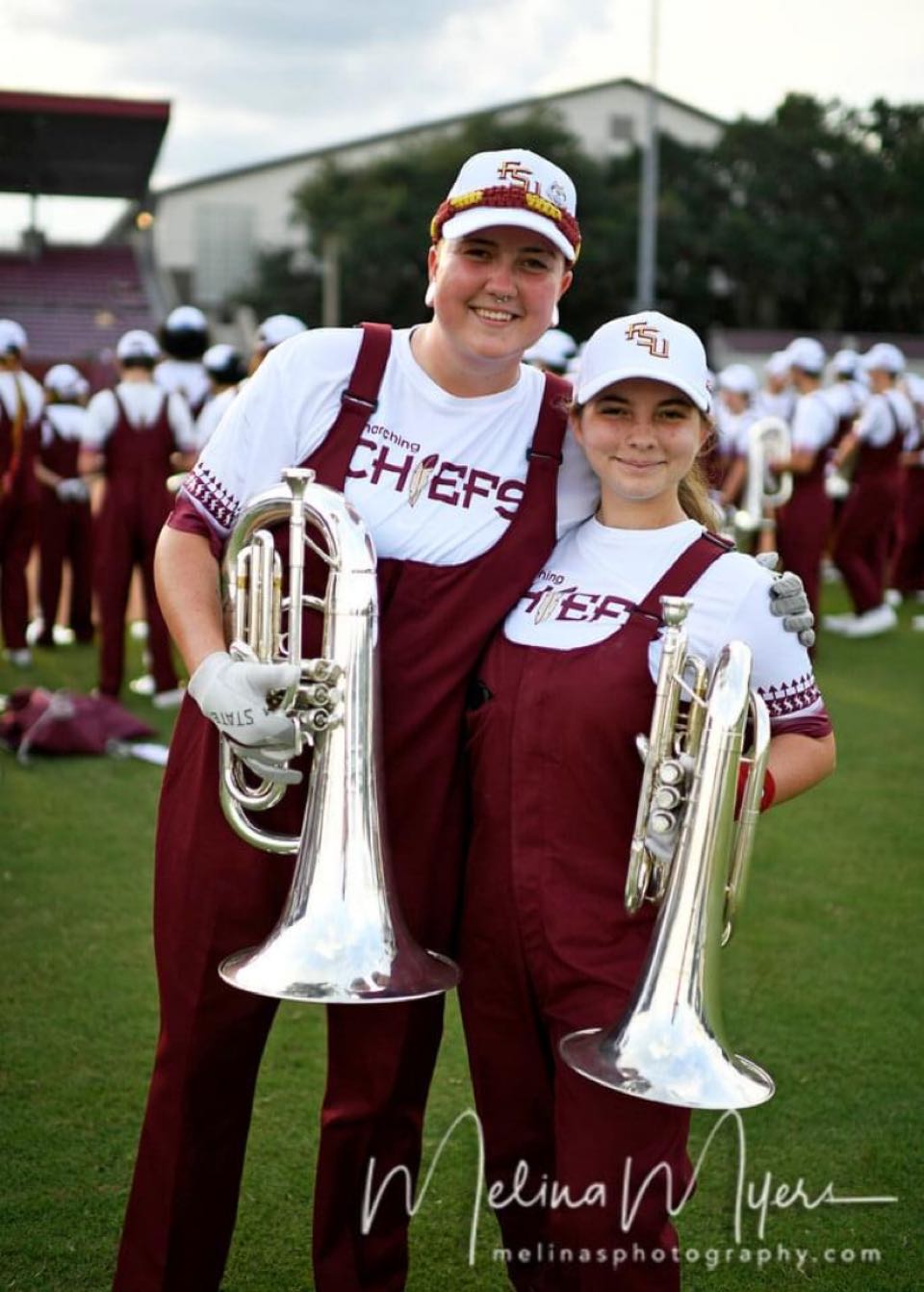
BIO
My name is Madison O'Stewart and I am from Palm Beach Gardens, Florida. This is my first year at Florida State University, and I hope to attend law school after completing my Bachelor's in English here. I am currently participating in several on-campus organizations, including the Undergraduate Research Opportunity Program (UROP), the College Success Program as a first-generation student, and the Marching Chiefs.
Rosenstrasse Foundation Wikipedia Research
Authors: Madison O'Stewart, Liam WirsanskyStudent Major: English Literature and Media
Mentor: Liam Wirsansky
Mentor's Department: N/A Mentor's College: N/A Co-Presenters:
Abstract
The Rosenstrasse Foundation is a non-profit organization that seeks to find and exemplify stories of civil courage against Nazi Germany in World War II, particularly in reference to the Rosenstrasse Protests, where non-Jewish wives of Jewish men protested against the unlawful arrest of their husbands. The Wikipedia team prioritizes finding and filtering through research databases, articles, and libraries to find reputable sources to utilize to the benefit of the organization.
Keywords: Holocaust, Rosenstrasse Protest
22nd annual Undergraduate Research Symposium
Robert Cochenour Poster Session 3: 11:00- 11:45/Poster #24
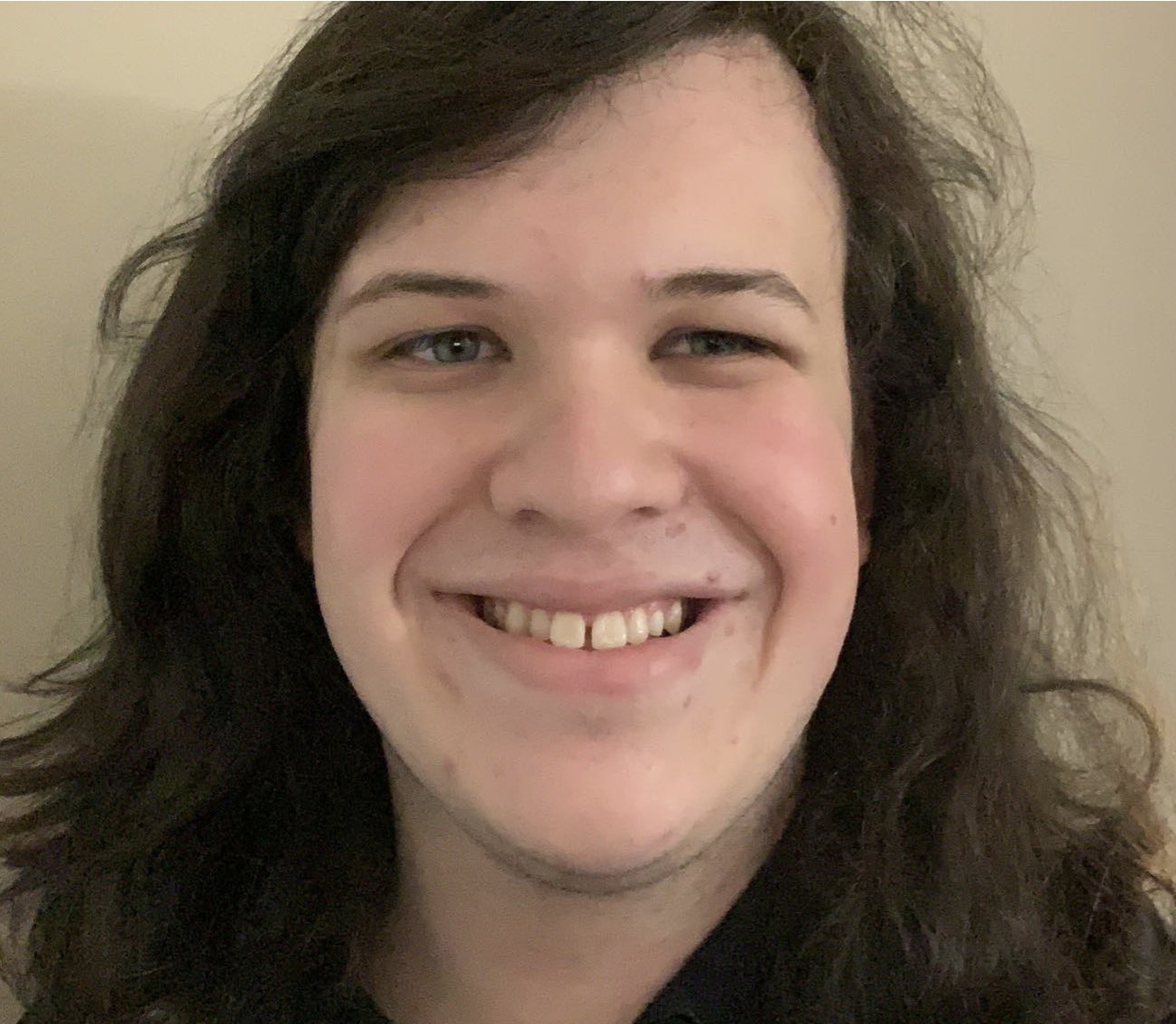
BIO
I am a Psychology and Criminology major here at Florida State University. I am interested in completing research in the field of social psychology about racial prejudice in police officers after I earn my bachelor's degree. I am currently a research assistant for the Rosenstrasse foundation where we are researching the Rosenstrasse Protest during World War II. I am also a member of the Psychology Honors society, Psi Chi.
The Rosenstrasse Foundation: Nonprofit Fundraising
Authors: Robert Cochenour, Nathan StoltzfusStudent Major: Psychology/Criminology
Mentor: Nathan Stoltzfus
Mentor's Department: History Mentor's College: Dorothy and Jonathan Rintels Professor of Holocaust Studies in the Arts and Sciences Co-Presenters: Madison Bogert, Mary Moshos
Abstract
Our fundraising team worked together to create a GoFundMe to help further the research of the Rosenstrasse Foundation. This GoFundMe page was specifically catered to gaining full access to an Ancestry.com account. Since Ancestry was offering a discounted holiday special, it seemed like the best opportunity to start fundraising. This account was dedicated to our genealogy team, and they use the account to gain access to valuable documents and information about the families the foundation is currently researching. Then the documents and information is sent to our biography team, where they write up biographies on these families. After the biographies are edited and finalized, they are sent to our website and social media team where it is directly published to our website. We are currently working on publishing a second GoFundMe fundraising campaign to gain access to a premium Wix account. Which will then be used to help our Foundation’s website have a more professional appeal. The premium account will also help us produce advertisements to gain more followers for our foundation.
Keywords: Rosenstrasse, Civil Courage, Protest, Fundraising, Ancestry
22nd annual Undergraduate Research Symposium
Samuel Domsch Poster Session 5: 1:30 - 2:15/Poster #54
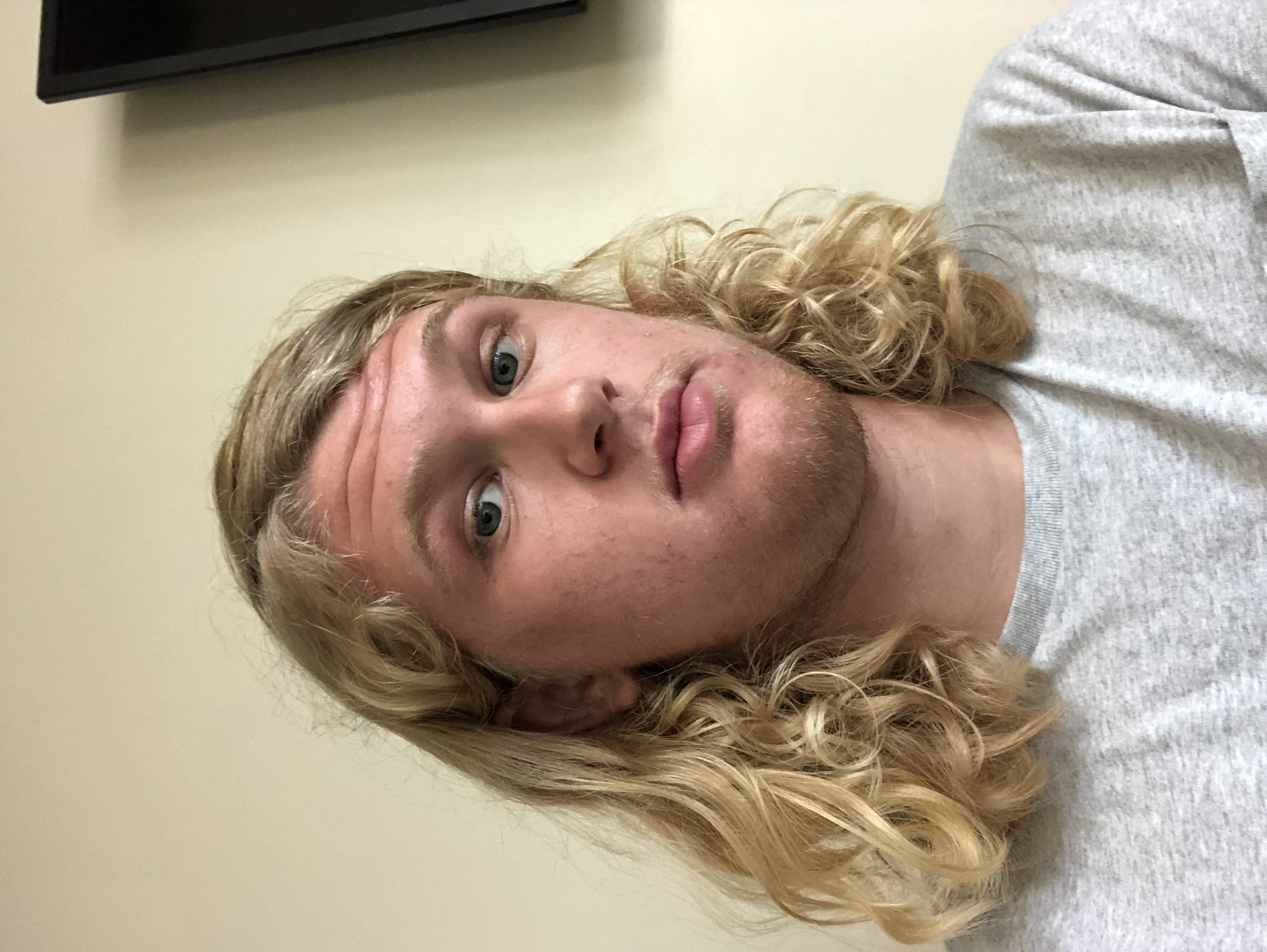
BIO
I am a sophomore actuarial science student from Austin, Texas doing research in the College of Education. My current career goals include becoming an actuary which is a professional who calculates risk and uncertainty in the insurance industry. I decided to pursue research in the college of Education because I have had a lot of strong high school teachers who were really good at their jobs. I wanted to discover what specifically made these teachers good at their jobs and how they could help other teachers improve their performance in the classroom.
Exploring Science Teacher's Perceptions About Co-Design Process Focused on Classroom Assessment Tasks
Authors: Samuel Domsch, Ozlem Akcil OkanStudent Major: Actuarial Science
Mentor: Ozlem Akcil Okan
Mentor's Department: Teacher Education Mentor's College: Education Co-Presenters: Elena Malchevskaya, Sarah Ghali, Jennifer Lafortune
Abstract
The Next Generation Science Standards (NGSS) is a set of education standards used across disciplines and grades in the United States to provide students with an internationally benchmarked science education rich in content and practice. The primary purpose of NGSS is to create a common standard for teaching in the U.S. and help in fostering a greater interest in science among students. Classroom-based performance assessments are embedded into classroom instructions to provide teachers with insight into how their students understand the material taught in class and monitor the development of their thinking skills. Three-dimension (3-D) assessments allow teachers to evaluate and monitor students’ progress during the course and use the evidence to offer targeted support catered to the student’s needs. While numerous states and school districts seek to find class-based performance assessments that support their goals for effective science instruction and NGSS guidelines, few quality assessments exist. This research introduces an accessible and receptive co-design process that focuses on five critical points that advantage their expertise. Seven 8th grade science teachers from an urban district participated in ten co-design meetings over six months. In this study, the teachers’ experiences regarding the co-design meetings and the way they perceived the co-design meetings were examined through the usage of interview protocol questions used to elicit teachers to think about their experiences during the meetings.
Keywords: Education Teacher Collective
22nd annual Undergraduate Research Symposium
Khiara Marie Nalupa Poster Session 3: 11:00- 11:45/Poster #22
BIO
Hello! I'm a sophomore planning on becoming a reconstructive surgeon in the future. I moved from Philippines to Tallahassee about nine years ago. In my free time, I enjoy reading books, taking care of my house plants, playing video games, and sewing.
Implicit Bias, Mindfulness, and Mental Health
Authors: Khiara Marie Nalupa, Dr. Shengli DongStudent Major: Interdisciplinary Medical Sciences: Clinical Professions
Mentor: Dr. Shengli Dong
Mentor's Department: Department of Educational Psychology and Learning Systems Mentor's College: College of Education Co-Presenters: Natalie Rubio, Alara Kayamk
Abstract
Implicit bias, the stereotypical perception toward someone or something, negatively affects the mental wellbeing of marginalized groups which they struggle to get help for because of institutional discrimination and bias. Mindfulness, the process of being nonjudgmentally aware of the present moment, is helpful for mental health by reducing rumination and anxiety and increasing self-esteem. Intervention studies also found that mindfulness can reduce racism, prejudice, and discrimination as it increases awareness of personal biases. Yet, there are few studies on how mindfulness affects implicit bias to reduce its mental effects, especially in college students and in wider demographic. Moreover, the multitude of techniques used in intervention studies make it difficult to see how mindfulness affects implicit bias. Therefore, purpose of this literature review is to determine how implicit bias affects the mental health of marginalized college students (e.g., Latinx, women of color, LGBTQ+) and how mindfulness can be utilized to reduce implicit bias and its effects on mental health.
Keywords: implicit bias, mental health, mindfulness, marginalized groups, college students
22nd annual Undergraduate Research Symposium
Karen Chantre Poster Session 7: 3:30-4:15/Poster #59
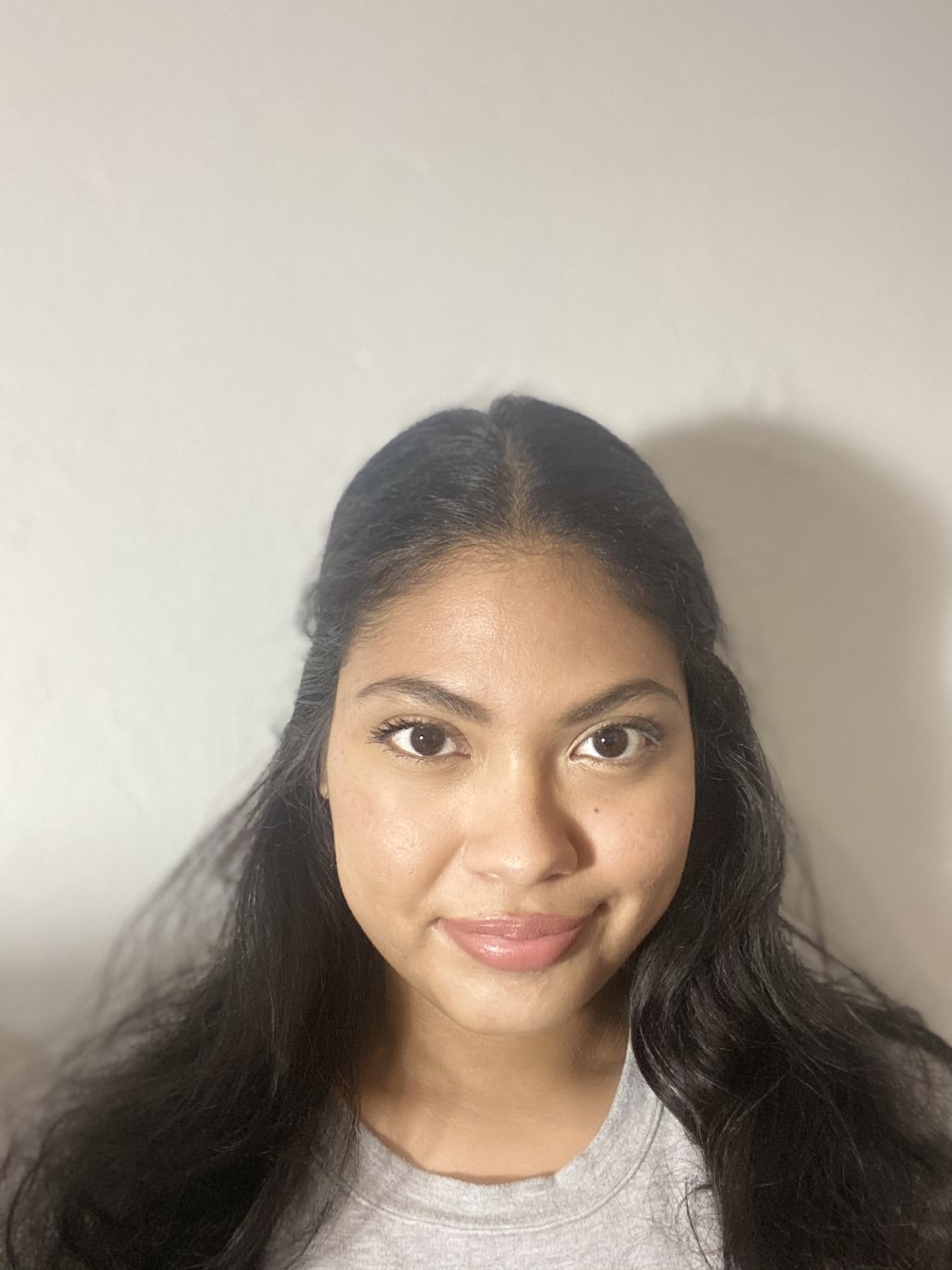
BIO
I am a 3rd-year student hoping to gain research experience in psychology-based research or anything related to the psychology field although I am open to different subjects. My hometown is Fort Lauderdale but I moved to Tallahassee to study at Florida State University. My career goal is to graduate with my bachelor's degree in psychology and go on to study clinical psychology.
Impact of language facilitation training
Authors: Karen Chantre, Carla WoodStudent Major: Psychology
Mentor: Carla Wood
Mentor's Department: School of Communication Science and Disorders Mentor's College: Communication and Information Co-Presenters:
Abstract
The United States has a sizeable Latinx population who are learning the language, and because of a high population, there should be techniques that help improve literacy. The increase in demand for this population emphasizes the importance of speech-language pathologists researching options for finding a program and design that provides beneficial results. In this research project, we observe and code language facilitation methods being used in the video sessions between the trained undergraduate student and the children. The goal is to see how the training in implementing specific language facilitation techniques and the feedback being received affects the performance of the undergraduate students. As a result, by implementing these techniques speech-language pathologists in the future can implement these practices in their profession.
Keywords: language facilitation technique ,web-based
22nd annual Undergraduate Research Symposium
Mira Spode Poster Session 4: 12:30-1:15/Poster #65

BIO
My name is Mira, and I am a sophomore from Melbourne, FL! I am a Biology and Food and Nutrition Sciences double major as of now, but I am hoping to get into the Dietetics major and go to grad school after I graduate to become a dietician. My research interests are mental health, body image, nutrition, and gut bacteria. A research goal of mine is to get into a lab researching how our gut microbiota affects mood and overall health. Currently, I am researching how social media affects mental health and body image in young people.
Do Trait Anxiety And Depression Moderate The Effect Of Social Media Use On Mental Health Factors?
Authors: Mira Spode, Madeline WickStudent Major: Biology, Food and Nutrition Sciences
Mentor: Madeline Wick
Mentor's Department: Psychology Mentor's College: College of Arts and Sciences Co-Presenters:
Abstract
Social media has infiltrated the daily lives of many and may have particularly detrimental effects on mental health for some. The current study sought to determine whether trait levels of anxiety or depression moderated the effect of posting edited photos on increasing state levels of anxiety or depression using secondary analyses of an existing data set. Participants who reported editing photos before posting them on Instagram (N=80; 93% female) were photographed in the lab and randomly assigned to one of four conditions: (a) edit and post the photo to Instagram; (b) edit but not post the photo; (c) post the unedited photo; or (d) neither edit nor post the photo. Trait and state levels of anxiety and depression/sadness were assessed after the experimental manipulation. Linear regression analyses supported that trait anxiety moderated the effect of condition on momentary anxiety, such that participants with higher trait anxiety experienced greater anxiety after posting edited photos. In addition, participants with higher trait depression experienced greater sadness after posting photos, whether or not the photos were edited. Overall, findings extend prior evidence that social media use may negatively impact mental health by suggesting this effect is greatest among those experiencing greater problems. More research is needed to understand whether findings reflect individual differences in vulnerability to the effects of social media or the accumulated effects of social media’s impact on trait-like measures.
Keywords: Social media, depression, anxiety, mental illness
22nd annual Undergraduate Research Symposium
Summer Carrier Poster Session 4: 12:30 - 1:15/Poster #60
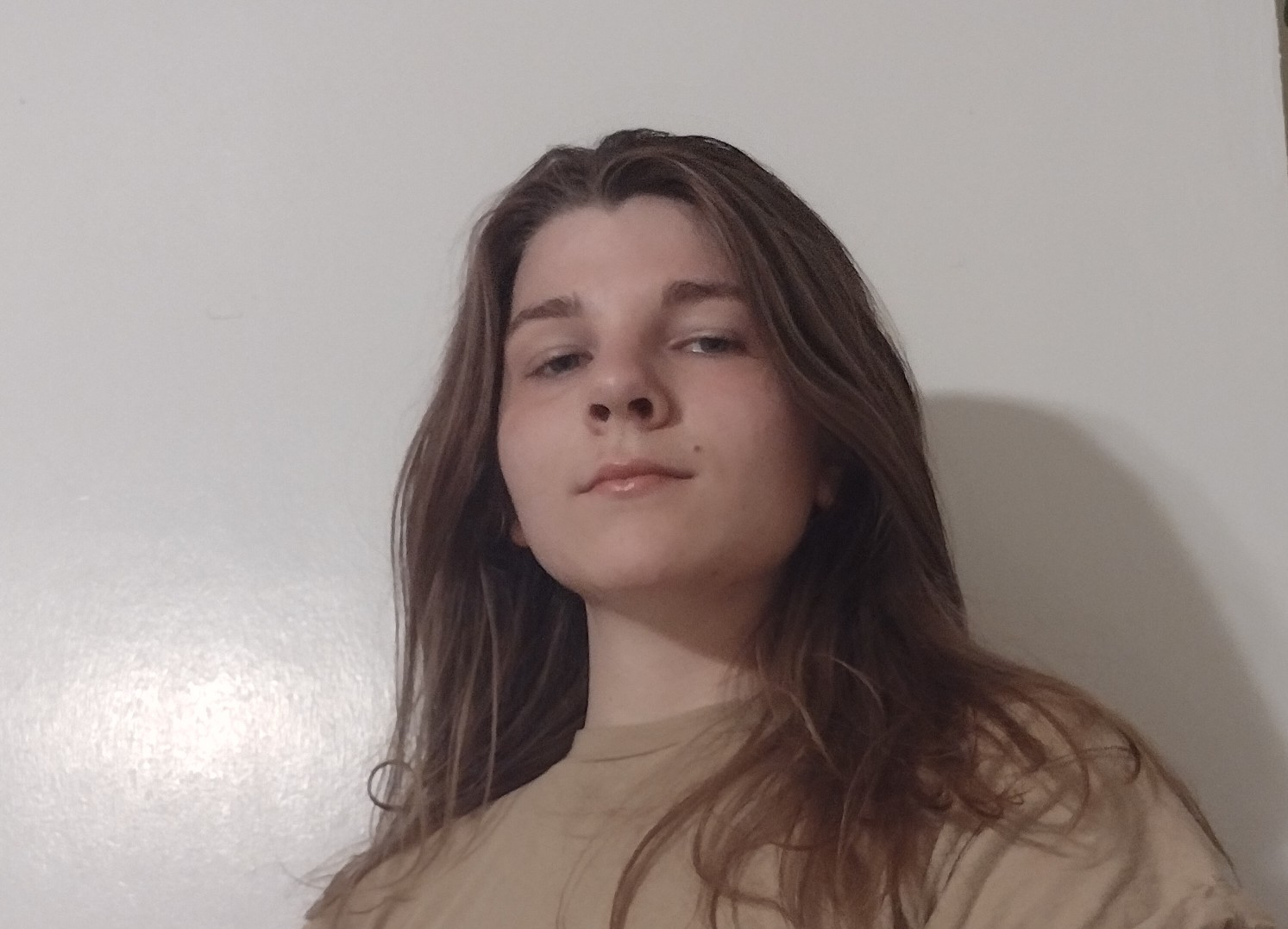
BIO
Summer Carrier is currently a freshman at FSU studying anthropology. She's from Jacksonville, FL, where she studied at an arts intensive high school for creative writing. Interested in all things art, design, and history, she someday wishes to work in the field of public education.
Comic and Graphic Narrative Accessibility
Authors: Summer Carrier, Aaron RodriguezStudent Major: Anthropology
Mentor: Aaron Rodriguez
Mentor's Department: English Mentor's College: Arts and Sciences Co-Presenters: Bria Weisblat
Abstract
Multimodal media is largely inaccessible to blind and low vision readers due to ineffective and/or inattentive human and AI interventions. Our project attempts to render accessible one type of multi-modal media: comics and graphic novels. Based on previous research, we have determined a spectrum of issues blind and low-vision readers encounter while reading comics and graphic narratives. This feedback was incorporated into the backend code, based on the comic book markup language (CBML) and user interface (UI) of the multimodal accessibility app Vizling. The app translates works in three different ways to provide options for users, as well as being able to represent the source material in a more holistic way than apps have done in the past.
Keywords: Accessibility comics language code
22nd annual Undergraduate Research Symposium
Sadie Mack Will be presented at the FSU Coastal and Marine Lab Open House

BIO
Hello, my name is Sadie Mack and I am from Jacksonville Florida. I am currently a second year student at Florida State University majoring in IMS-Clinical Professions. I am on the Pre-Med track and am interested in almost any STEM based research.However, I am most looking forward to getting involved in clinical research.
A Comparison of Stable Isotope Dynamics in Black Sea Bass(Centropristis striata) and Southern Stingrays (Hypanus Americans)
Authors: Sadie Mack, Ashley DawdyStudent Major: Interdisciplinary Medical Science- Clinical Professions
Mentor: Ashley Dawdy
Mentor's Department: Marine Biology Mentor's College: College of Arts and Sciences Co-Presenters: Alicia Wilson
Abstract
Stable-isotope analysis (SIA) measures the amount of non-radioactive isotopes which can be used in determining the flow of nutrients throughout food webs, and among the trophic levels. The goals of this experiment were to 1) identify the time taken for a change in trophic level to be reflected in the tissues of elasmobranchs using nitrogen- and carbon-based SIA and 2) compare isotopic signatures of teleosts and elasmobranchs feeding at the same trophic levels. The diet of Hypanus americanus (Southern stingray) and Centropristis striata (black sea bass) were controlled. They were fed a primary consumer diet (shrimp) for 11 weeks, then switched to a secondary consumer diet (squid) for 11 more weeks. Blood and muscle samples were taken weekly for the Southern stingrays and every 2-3 weeks for black sea bass. These samples were then prepped and sent for stable isotope analysis. It has been assumed that teleosts and elasmobranchs have the same isotopic signatures across trophic levels, however, due to their vastly different physiologies, we expect to see a different result. This will aid ecological studies, as researchers will be able to better interpret isotopic signatures of tissues by gaining knowledge regarding the time frame in which trophic shifts will be reflected.
Keywords: Marine, Biology, Stingray, Sea Bass.
22nd annual Undergraduate Research Symposium
Shawntah Thomas Poster Session 5: 1:30 - 2:15/Poster #38
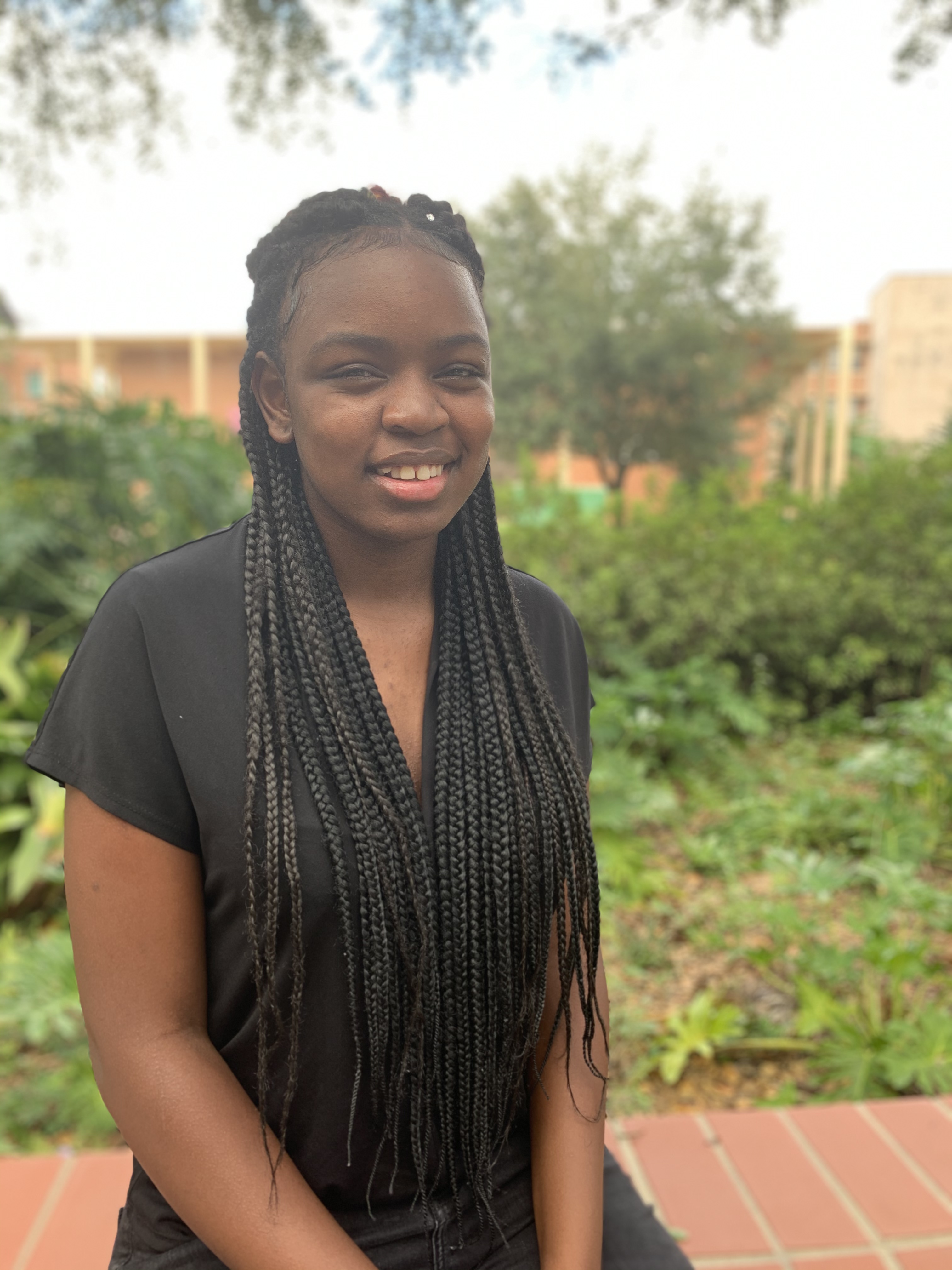
BIO
I am a junior here at Florida State University. I am from Miami, Florida and I am interested in any from of medical research. My goal is to get a law degree and possibly work in a Health policy concentration.
Towards an AI-based Application to Support Lab Results Comprehension
Authors: Shawntah Thomas, Zhe HeStudent Major: Public Health
Mentor: Zhe He
Mentor's Department: Behavioral Sciences and Social Medicine Mentor's College: School of Information Co-Presenters: Maddy Dupuis and David Garner
Abstract
The purpose of this project is to create an application for users to view medical information and suggest accurate implications based on their medical results. This project is currently in the researching and gathering data phase. In our literary analysis we have found that through great medical advancements people in the U.S are living longer. We also found that in the U.S, most adults have more than one chronic condition, the majority being elderly. Although they can seek treatment at a hospital, for many of these chronic illnesses the symptoms can be managed or lessened from home without constant doctor visits. For this reason, medical facilities often make use of patient portals so that patients may easily view their results and make more informed health decisions from home. Despite the benefits, these patient portals are not seeing much usage by the target audience: elderly patients with chronic conditions. The main reason for this is that many patients do not find these portals user friendly. Our goal is to make a portal better suited for this target audience so that they are able to view their medical information and as a result make informed health decisions from the home.
Keywords: eHealthLab, Precious, Inception
22nd annual Undergraduate Research Symposium
Raquel Pauly Poster Session 6: 2:30-3:15/Poster #61
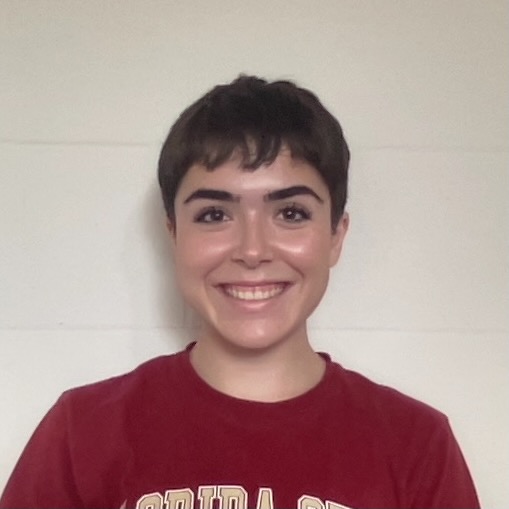
BIO
I am a third year undergraduate student studying meteorology. I grew up in northern Virginia, but I was drawn to Florida by its beautiful beaches and powerful storms. During my time at Florida State University, I have developed a passion for climate science, particularly paleoclimate. Coral, lake sediments, ice sheets, and other proxies contain hints about Earth’s climate history. Paleoclimate allows us to piece these “hints” together like a puzzle and reconstruct climate from thousands of years ago! With a better understanding of how the climate behaves over long time periods, we can make better predictions of anthropogenic climate change. I am also interested in the overlap between environmental science and social science. I would love to be a part of educating the public about climate change, contributing to climate policy, and combating environmental injustice. As an FSU Coastal and Marine Laboratory Diving Scholarship recipient, I am currently taking my education underwater and training to become a American Academy of Underwater Sciences certified scientific diver with the intention of collecting my own coral samples in the future.
Data-model comparisons of mid-Holocene climate in the tropical Pacific
Authors: Raquel Pauly, Alyssa AtwoodStudent Major: Meteorology
Mentor: Alyssa Atwood
Mentor's Department: Earth, Oceanographic, and Atmospheric Sciences Mentor's College: College of Arts and Sciences Co-Presenters:
Abstract
Climate models that can accurately simulate global processes of past climates are more reliable for simulating future climate, which will allow us to better predict and understand anthropogenic climate change. As such, paleoclimate data provide useful benchmarks for testing the accuracy of climate models. In particular, coral oxygen isotope (18Ocoral) records provide high-resolution constraints on past changes in sea surface temperature and hydrology from the tropical oceans. Coral records indicate that large changes in tropical Pacific climate occurred several thousand years ago, during a period known as the mid-Holocene. The tropical Pacific was cooler and drier, while seasonal and interannual variations associated with the El Niño/Southern Oscillation (ENSO) were weaker. However, the driver and mechanisms of these changes are not well understood. The isotope-enabled Community Earth System Model (iCESM) is one of a few global climate models that is enhanced with water isotope tracers, which allows us to directly compare model output to coral proxy data. Analysis of a mid-Holocene simulation with this model demonstrates that iCESM accurately simulates the cooler/drier conditions and the dampening of the annual cycle during the mid-Holocene. However, the iCESM results are inconsistent with proxy data regarding changes in ENSO variability during the mid-Holocene. We present results from these proxy-model comparisons and discuss opportunities for improved understanding of tropical Pacific climate and ENSO.
Keywords: Paleoclimate, Oceanography, Atmospheric Science, Climate Modeling
22nd annual Undergraduate Research Symposium
Guissella E. Cruz Rodriguez Poster Session 2: 10:00-10:45/Poster #61
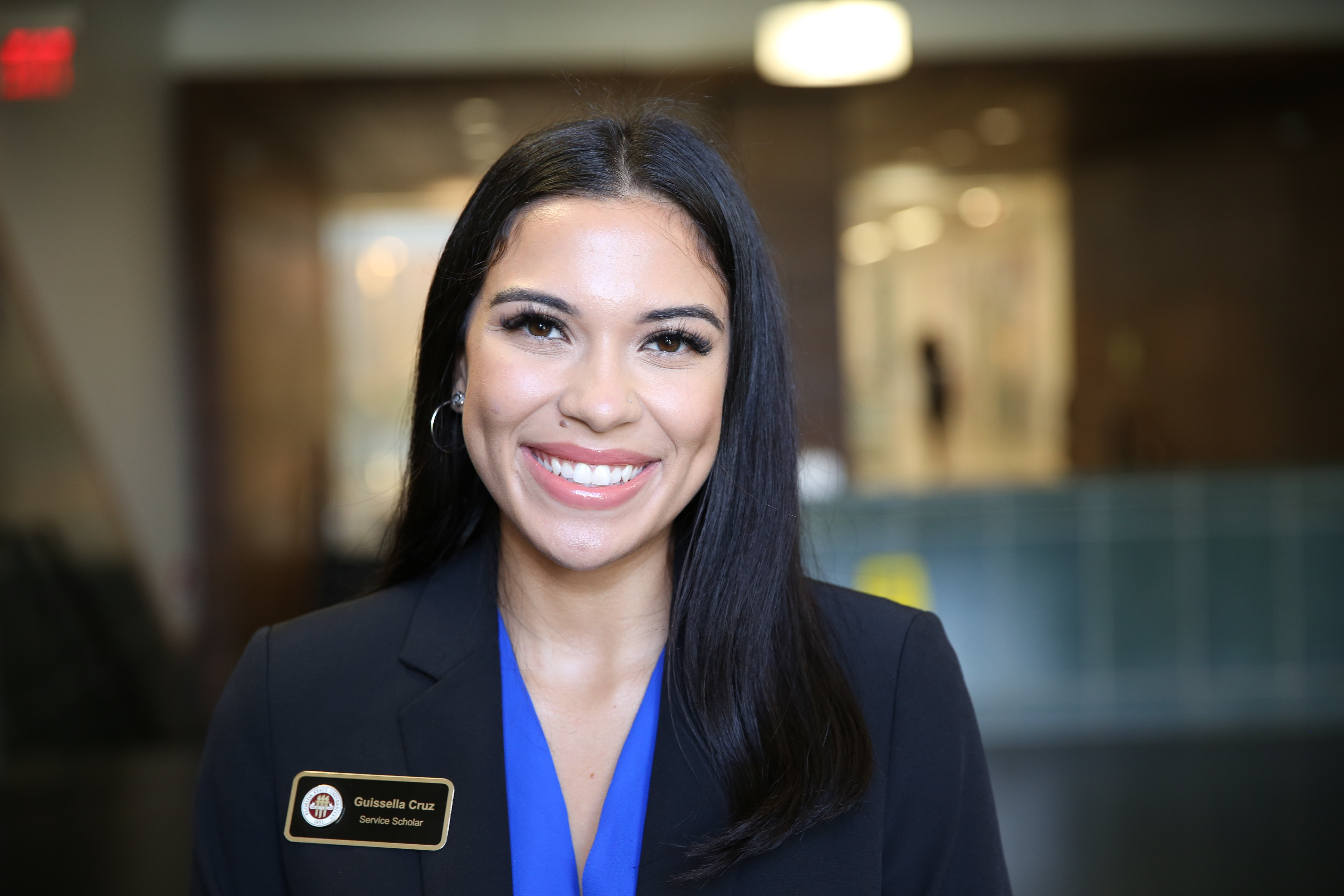
BIO
I am a fourth-year Service Scholar, a Garnet and Gold Scholar, and a 2021 Global Scholar. I was a research assistant and receptionist at FSU’s Center for Human Rights during my second and third years. I provided translation services and would file USCIS forms to support undocumented people. I took part in UROP my second year and became a UROP Leader from 2020-2022. After UROP, I continued conducting research with Dr. Brendan Lantz and Dr. Marin Wenger, investigating the relationship between Confederate memorialization and Hate Crimes. I had the opportunity to present this research at the 2020 Undergraduate Research Symposium and the 2021 Florida Undergraduate Research Conference (FURC). I’m currently in the Honors Program assessing the consequences of image-based sexual abuse (IBSA) of BIPOC and LGBTQIA+ youth. I was a 2021 Social Science Scholar and was awarded the 2021 IDEA Grant which sponsored my research. I had the opportunity to present this research at the 2021 President’s Showcase of Undergraduate Research Excellence and 2022 FURC. I’m currently serving Tallahassee as a Community Outreach Specialist with Legal Services of North Florida organizing pro-bono legal clinics. I aspire to dedicate my career to addressing the ever-changing impacts of sexual violence and IBSA.
A Study of the Consequences of Image-Based Sexual Abuse Victimization among BIPOC Youth Survivors
Authors: Guissella E. Cruz Rodriguez , Dr. Brendan LantzStudent Major: Sociology
Mentor: Dr. Brendan Lantz
Mentor's Department: Director of Hate Crime Research and Policy Institute Mentor's College: College of Criminology and Criminal Justice Co-Presenters:
Abstract
Image-based sexual abuse (IBSA) is the “disclosure of sexually explicit images without consent and for no legitimate purpose” (Franks 2017). IBSA, more commonly known as revenge porn, is an emerging form of sexual abuse negatively impacting the quality of life, mental health, wellbeing, and reputation of survivors (Eaton 2020; Franks 2015).
Growing research shows IBSA is rampant among adolescents, women, and the LGBTQIA+ community. This is especially harmful to BIPOC youth since they are often hypersexualized at a young age, making them more susceptible to IBSA victimization. IBSA subjects girls and LGBTQIA+ youth to being commodified by their bodies which is harmful since victimization is taking place during adolescence where they develop their identity, self-awareness, and sense of self. When youth are victimized they are sexually objectified and taught their worth derives from their body or sexual functions; thus teaching them they're objects accessible for the gratification of everyone else which may make them alarmingly vulnerable to sexual violence and revictimization.
This study aims to assess the consequences of IBSA victimization among BIPOC youth. Specifically how victimization distorts youths' understanding of consent and whether victimized youth are vulnerable to sexual violence in the future.
Keywords: Sexual Abuse Prevention, Adolescents, Image-Based Sexual Abuse Victimization
22nd annual Undergraduate Research Symposium
Aaron Johnson Poster Session 1: 9:00-9:45/Poster #27
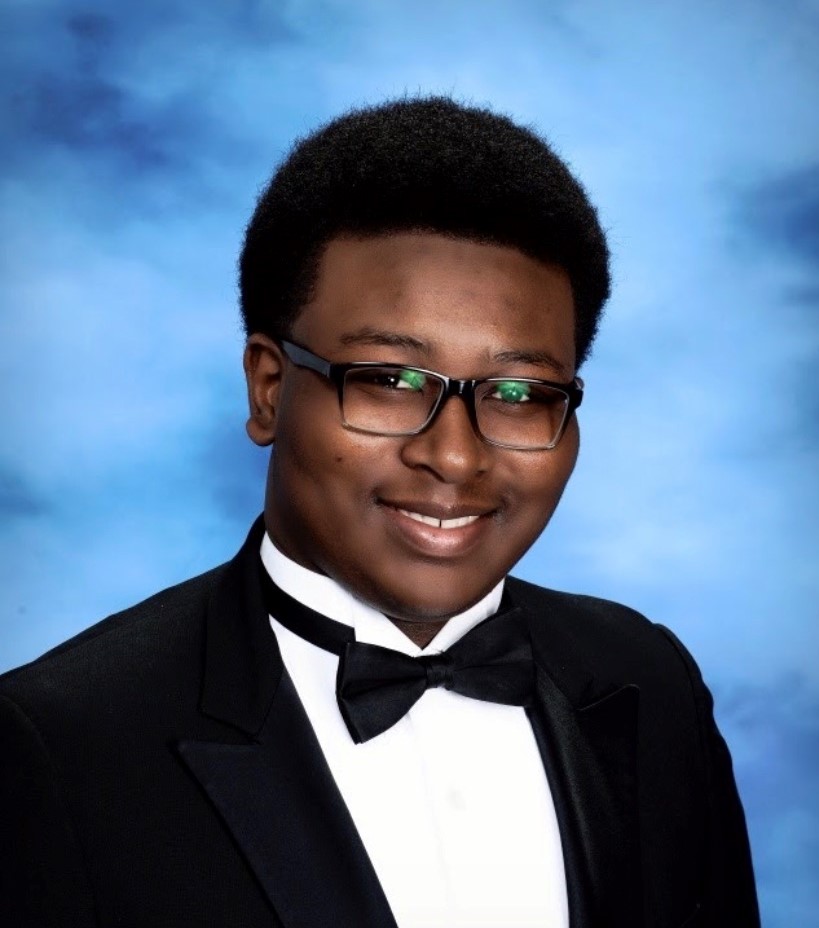
BIO
My name is Aaron Johnson and I am a second-year at Florida State by way of Palm Beach Florida. I am working on a minor in education and I am majoring in interdisciplinary social sciences with a primary in public policy and a secondary in social entrepreneurship and innovation. I plan to receive my doctorate in education as I want to improve the education that all students receive, but more specifically those who have been left behind by the education system. Following suit, my research interest resides in education and its intersection with critical race and other forms of discrimination.
Exploring Racial Battle Fatigue for Undergraduate Student Leaders of Color
Authors: Aaron Johnson, Dr. Cameron BeattyStudent Major: Interdisciplinary Social Sciences
Mentor: Dr. Cameron Beatty
Mentor's Department: The Center for Leadership & Social Change Mentor's College: College of Education Co-Presenters:
Abstract
This project is centered around Exploring Racial Battle Fatigue for Undergraduate
Student Leaders of Color. There was a set of 30 minutes to 1-hour interviews given to
Black and Latinx student leaders who had experiences with Racial Battle Fatigue (RBF).
Participants were individually interviewed twice for 30 minutes to 1 hour. The first
interview looked at the participants' leadership history at Florida State in tandem with
their background. The second interview focused on the individuals’ stories of racism
along with the impact it had on them and their responses to it. With this study still
being in the beginning stages no conclusive findings. Despite this, the goal remains that
this study will highlight the severity of RBF and encourage college administrators to
create a more inclusive space for purposeful change targeted at the intersection of
systems of oppression and privilege and its effect on the lives of SLOC, particularly
those enduring racial battle fatigue.
Keywords: Race, Minority, Leadership, Undergraduate
22nd annual Undergraduate Research Symposium
Dylan Murphy Poster Session 3: 11:00-11:45/Poster #60
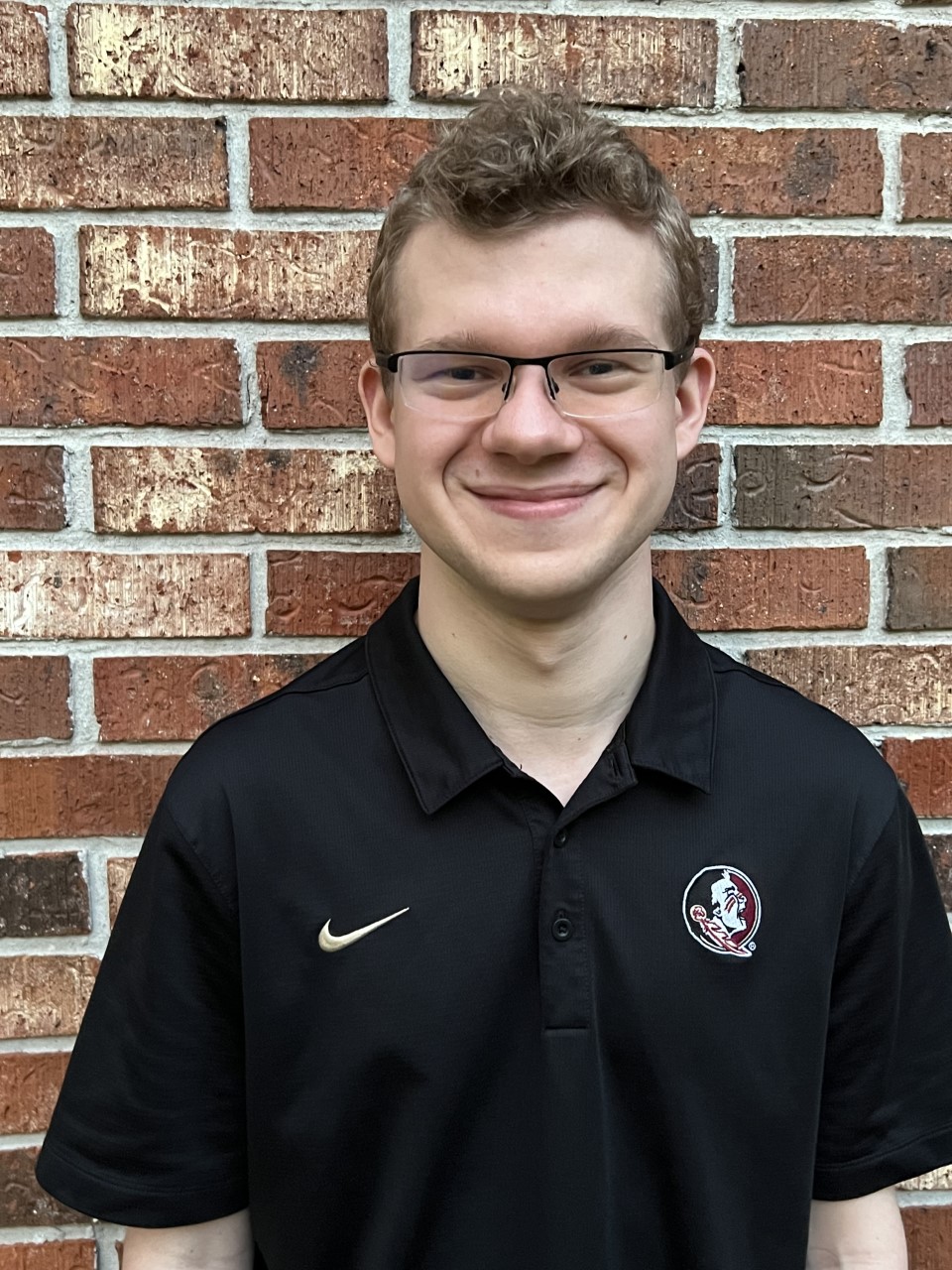
BIO
I am a sophomore meteorology student from Tallahassee, Florida. My research interests include improvement of intensity forecasts for tropical cyclones and severe weather events. More broadly, I am passionate about programming and its applications to meteorology. My hobbies are gaming, exercising, and keeping up with college sports.
Machine Learning for Loop Current Detection
Authors: Dylan Murphy, Olmo Zavala-RomeroStudent Major: Meteorology
Mentor: Olmo Zavala-Romero
Mentor's Department: Center for Ocean-Atmospheric Prediction Studies Mentor's College: Florida State University Co-Presenters:
Abstract
The Loop Current (LC) is a warm ocean current located in the Gulf of Mexico. It provides a robust heat source allowing tropical cyclones to rapidly intensify. A recent example of this phenomenon is Category 4 Hurricane Ida in 2021. While manual detection of the LC is trivial, automated detection can be challenging due to the complex dynamics of the LC and its eddies. A variable known in the literature as Sea Surface Height (SSH) was derived, and a 17 cm threshold for SSH was applied to an oceanic dataset to find the LC. Once the LC threshold was obtained, computer vision (CV) techniques were applied to make the LC continuous and isolated. A contour line was drawn around the boundary of the LC, and its perimeter was computed from the dataset. The evolution of its perimeter over time can be used to describe some dynamics of the LC, such as stretching and shedding events. In addition, extreme events, such as hurricane interactions with the LC, may affect its perimeter.
Keywords: machine learning loop current oceanography

